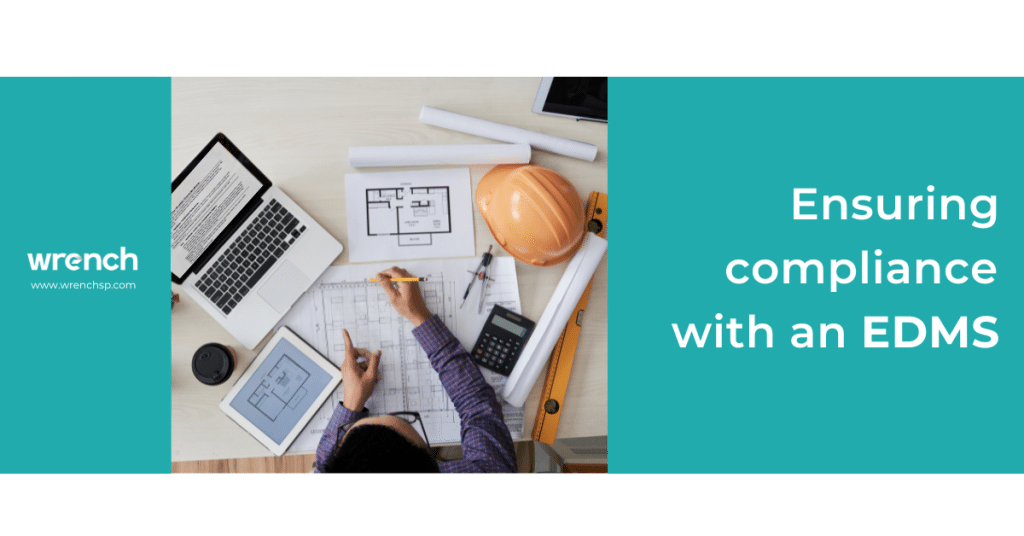In an EPC project, ensuring that all the regulatory requirements country have been duly followed is one of the most challenging tasks your organization will face through the course of a project. However, with an EDMS the challenge can be mitigated to a great extent, and if the EDMS contains document workflow management processes, you will have taken a big step towards 100% compliance. Yes – with digital systems 100% compliance is achievable!
Even in EPC organizations that have been around a long time and have experience executing huge projects worldwide and are familiar with the difficulties of working with many kinds of engineering consultants, the differences in compliance requirements or regulatory approaches continue to be the root cause for almost all delays in project management. That is why a digital system that can reliably enforce compliance is very critical to an organization’s success these days.
Let’s understand why document workflow management is so critical in this context. Consider a typical manufacturing or infrastructure project. You’re dealing with the engineering of the plant, construction of technical products and their delivery from various locations around the globe to the construction site – and keep in mind that each location will have its own laws, standards, and regulation requirements – and then on to assembling, testing and commissioning. That is a lot of documents! EPC projects are in any case very complex and involve dozens and sometimes hundreds of participants and without a digital system it is amazing that compliance is achieved at all! But now that we do have access to digital solutions that enable document workflow management, how can we be sure that they will be able to compliance with all documents and deliverables across all departments and standards and regulations?
The first thing to know is that a modern EDMS serves as a centralized archive for all the documents used in that project and therefore it offers complete control over not only access to those files but to their updates and revisions and transmittals. Additionally, some of the more advanced EDMS systems allow authorized users to keep audit trails of all the actions and activities within the system, so that system administrators are always aware of who is accessing a particular document and when.
Although an EDMS by itself can’t help an organization fulfill all the compliance requirements outlined in ISO or some other standard followed by the organization, if it is programmed during implementation with all those standards right from the outset, it will be able to drive work forward as per those standards and regulations by default, thereby ensuring that each step has been followed as prescribed – and ultimately, ensuring compliance at the document, task, and deliverable level. This is invaluable to an EPC organization as it avoids a great deal of expense and conflict, not to mention last-minute scrambling.
I’ll give an example of ISO. ISO has defined a certification that will confirm that their standards were met and this proves that the company is properly adhering to those standards and is hence considered to be ISO-compliant. (However, the certification is not always necessary for companies to be ISO-compliant). ISO 9001 is the international standard for quality management systems, with a quality management system (QMS) being similar to a document management system. The document management system is a system for managing the project’s documents, accountability, and records and helps ensure that companies meet the requirements of the participants like customers, shareholders, vendors, etc. by understanding their requirements and providing detailed records and audit trails as and when needed. Now, one of the core requirements of ISO 9001 is that its implementation be based on a system of dynamic processes rather than static standards. So, to meet ISO 9001 standards, organizations seeking ISO 9001 certification have to manage the control of documents, set up corrective and preventative actions, and empower internal audits within their quality management system. Even when all these are met, organizations considered ISO 9001 compliant strive to not only meet customer requirements but exceed them. Therefore, ISO 9001 certification is considered by the industry to be a kind of “badge of honor” amongst partners and customers and can also be a competitive differentiator, especially when bidding for business in other countries. In such cases, a document management system with good document workflow management protocols becomes a necessity as it is the only way to uphold the level of compliance required.
Another example of how an EDMS can help ensure compliance is in the field of Security. On one project I worked in, we had fourteen security categories specified in NIST SP 800-171. At the time we did not have a good compliance management system in place and found it very difficult to consistently meet the NIST compliance standards and not only that, to ensure that every other department and vendor was meeting them as well. It was only after we switched out our legacy document management system with an advanced EDMS that offered in-built document management workflows and created a shared online work environment that we were able to achieve the required levels of compliance.
